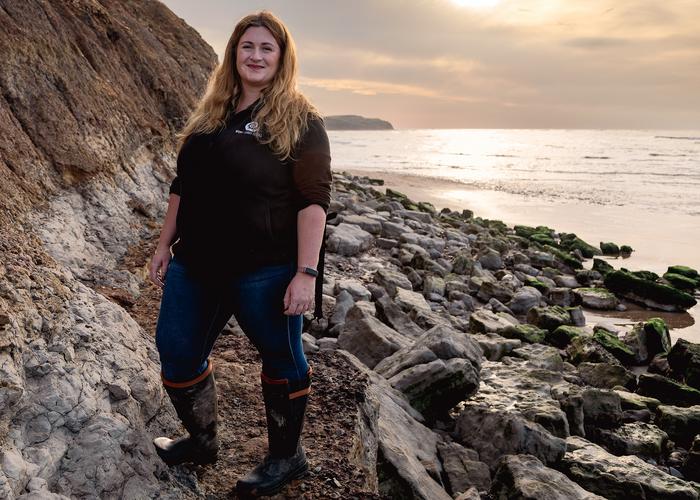The first side-necked turtle ever to be found in the UK has been discovered by an amateur fossil collector and palaeontologists at the University of Portsmouth.
The fossil remains are the earliest of a so-called side-necked pan-pleurodiran turtle, named as such because they fold their neck into their shell sideways when threatened. This does mean they can only see out with one eye.
Originally found on a National Trust beach on the Isle of Wight, the turtle fossil is an almost complete shell with cervical, dorsal and caudal vertebrae, scapulae, pelvic girdle and appendicular bones. Sadly, the skull was missing.
If you enjoy the content we create and would like to support us, please consider becoming a patron on Patreon! By joining our community, you’ll gain access to exclusive perks such as early access to our latest content, behind-the-scenes updates, and the ability to submit questions and suggest topics for us to cover. Your support will enable us to continue creating high-quality content and reach a wider audience.
Join us on Patreon today and let’s work together to create more amazing content! https://www.patreon.com/ScientificInquirer
Lead author, Megan Jacobs, said: “This is an amazing discovery because it’s the first time this type of turtle has been found in the UK. Even more exciting is that we used a new technique of radiometric dating to determine the age of the fossil beyond any doubt. And to top it off, CT scanning revealed all the tiny bones inside. It’s really incredible for what looks like a rolled beach pebble!”
Megan and colleagues dissected minerals from inside the turtle shell and analysed them for uranium and lead. By measuring the ratio of lead to radioactive uranium, they established the turtle was from the Lower Cretaceous period, around 127 million years ago.
The fossil was originally found on the foreshore at Brook Bay on the southwest coast of the Isle of Wight by fossil collector Steve Burbridge. This part of the coast is well-known for fossil vertebrates that come from the cliff and foreshore exposures of the upper part of the famous Isle of Wight fossil beds of the Wessex Formation.
This is the first time that radiometric dating has been used on a fossil from the Wessex formation.
Megan added: “We’ve nicknamed the turtle ‘Burby’ after Steve who very kindly donated the specimen to the Dinosaur Isle Museum at Sandown on the Isle of Wight.”
The researchers also used cutting-edge micro CT scanning at the University of Portsmouth’s Future Technology Centre to discern various tiny bones. This advanced imaging technique provided invaluable insight into the structure and composition of the turtle’s shell, without damaging it.
Steve said: “It’s beyond my wildest dreams to have one of my finds published. I could never have guessed it was such an incredibly important fossil. It’s so wonderful to see all the tiny bones inside too.”
Geologist, Dr Catherine Mottram, from the University of Portsmouth’s School of the Environment, Geography and Geosciences is one of the paper’s co-authors. She said: “It is exciting that we have been able to use cutting edge radiometric dating techniques to provide absolute constraints for this important sequence for the first time.”
IMAGE CREDIT: Pete Johnstone






Leave a Reply